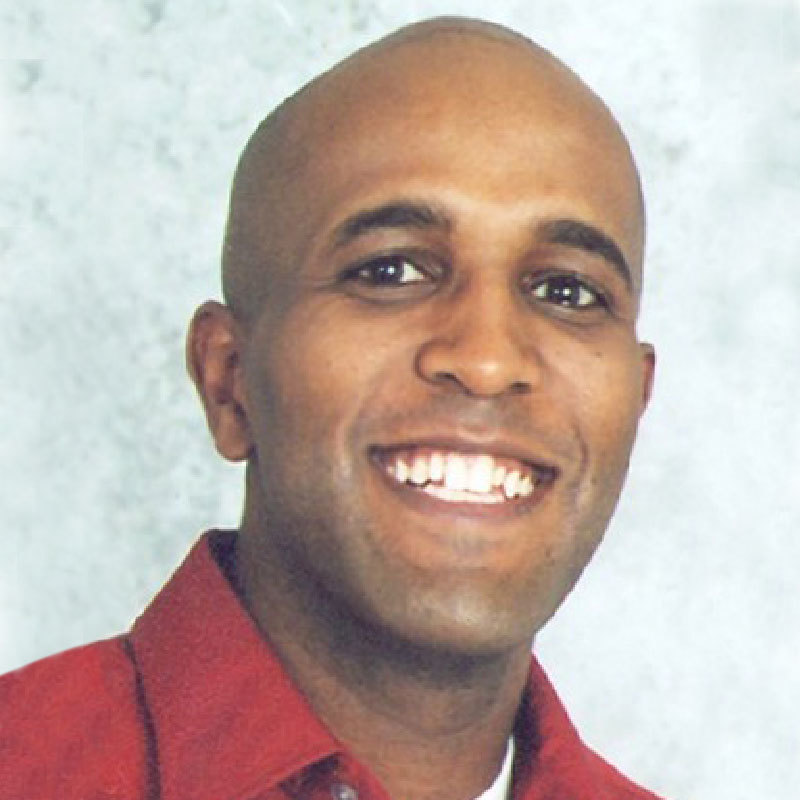专业学习

从7岁,我在小镇Illinoi长大s, the son of Ethiopian and Eritrean refugees with whom I had lived through many hardships before arriving in the U.S. It was thanks to the support and encouragement of great teachers, counselors, and others here that I developed positive learning habits and ultimately had the good fortune to attend Harvard University. My experience there also started out differently from most of my classmates. I arrived in Cambridge without my parents, who had health concerns and lacked the means to travel with me. So I navigated this new experience on my own. But my K–12 teachers had given me the confidence and preparation to learn about anything. This ability to learn proved more valuable than having my parents there to scaffold me and help me settle in to college life.
I use this story as an example of just how vital confidence building is to learning and success. There is a point between what wecan doand what we cannot yetdo that I call the Growth Point. While growth mindset receives plenty of attention today as a means of ensuring positive student outcomes, the Growth Point is where the real work is. Much of my work centers around challenging students to venture to the Growth Point and beyond— a Growth Mindset 2.0, if you will—past the intersection ofcan doandnot yet. It’s that learning moment when a student can choose to apply the growth mindset and thereby gain new knowledge and experience.

How to Advance fromCan DotoNot YetTerritory
To think of it another way, simply teaching students theconceptor definition of growth mindset is not enough. We, as educators, must give young people thetoolsto put growth mindset to work. In Star Wars-speak, it’s the difference between knowing the meaning of “the force” and knowing what a Jedi is andactually becominga Jedi themselves—taking up a lightsaber and applying it to a challenge.
Consider this math problem that might cause students to instantly give up—just based on its complex appearance.

Without proper preparation and confidence, many students might see this problem as impossible. Instead of letting them walk away, what if we equipped students with a plan for attacking difficult challenges like this and taught them how to use their existing skills to confidently tackle new problems—their own academic, metaphorical lightsaber?
On the lefthand side of this chart, I share some motivating “self-talk” that students can learn to use when they’re asked to take on a challenge. The righthand side shows the opposite, fixed-mindset thinking. If students can learn to incorporate these positive statements and questions as part of their day-to-day approach to learning, they will surely grow.

The views expressed in this article are those of the author and do not necessarily represent those of HMH.
Related Reading
-

6 Levels of English Language Proficiency for ELL Students
Jennifer Corujo
ShapedEditor -
Why Is Classroom Management Important?
Teresa Meredith
Teacher -

Don’t Lead with Science Vocabulary—Start with Conceptual Meaning
Dr. Karen Ostlund
Assistant Professor of Instruction, Emerita, UTeach, College of Natural Sciences, The University of Texas at Austin









CORE CURRICULUM
HMH Social Studies, 6-12
SEE ALL SOCIAL STUDIES
AP & ELECTIVES
AP Human Geography
Personal Finance
SEE ALL SOCIAL STUDIES
AP & ELECTIVES
SUPPLEMENTAL
Connected Teaching and Learning
HMH’s Connected Teaching and Learning integrates assessment, core instruction, supplemental practice, intervention, and professional learning all on one platform.
Professional Development
Providing professional development for teachers, HMH’s professional learning courses, coaching, and leadership advisory supports educators every step of the way.
Keeping It Current For Grades 6–12
Each month we bring you videos, articles, and current events designed to build cultural awareness, media literacy, and a deeper understanding of significant historical figures and events.
For Teachers
Coaching Membership
Teacher's Corner
Live Online Courses
SEE ALL PROFESSIONAL DEVELOPMENT
For Leaders
The Center for Model Schools (formerly ICLE)
Intervention Curriculum
HMH's K-12 intervention programs are built on 20+ years of proven results. We can help teachers develop an intervention curriculum that meets students' needs.
Science of Reading eBook
In this exclusive Science of Reading eBook you’ll find research-backed information that will walk you through the experience new readers face as they build their reading brain.
Model Schools Conference
Join us for the 32nd annual Model School Conferences presented by The Center for Model Schools. We showcase the success of districts, schools, and educators.
AP & Electives
Assessment
Early Learning
English Language Development
Homeschool
Intervention
Literacy
Mathematics
Professional Development
Science
School Improvement
Social and Emotional Learning
Social Studies
Special Education
Summer School
SEE ALL SOLUTIONS
Intervention Curriculum
HMH's K-12 intervention programs are built on 20+ years of proven results. We can help teachers develop an intervention curriculum that meets students' needs.
BROWSE RESOURCES
Classroom Activities
Customer Success Stories
Digital Samples
Events & Webinars
Grants & Funding
International
Research Library
Shaped - HMH Blog
CUSTOMER SUPPORT
Contact Sales
Customer Service & Technical Support Portal
Platform Login
Free Teaching Resources: Fun Classroom Activities and Lesson Plan Ideas
Here you'll find free learning activities, lessons, downloadables, and videos for students in Grades K–12 to keep learning and growing at grade level.
2023–2024 Monthly Calendar Themes for School
Check out these monthly calendar themes for school, complete with teaching resources for holidays and other days of significance for all grade levels.
Learn about us
About
Diversity, Equity, and Inclusion
Environmental, Social, and Governance
News Announcements
Our Legacy
Social Responsibility
Supplier Diversity
Join Us
Careers
Educator Input Panel
Suppliers and Vendors
Divisions
Heinemann
The Center for Model Schools (formerly ICLE)
NWEA